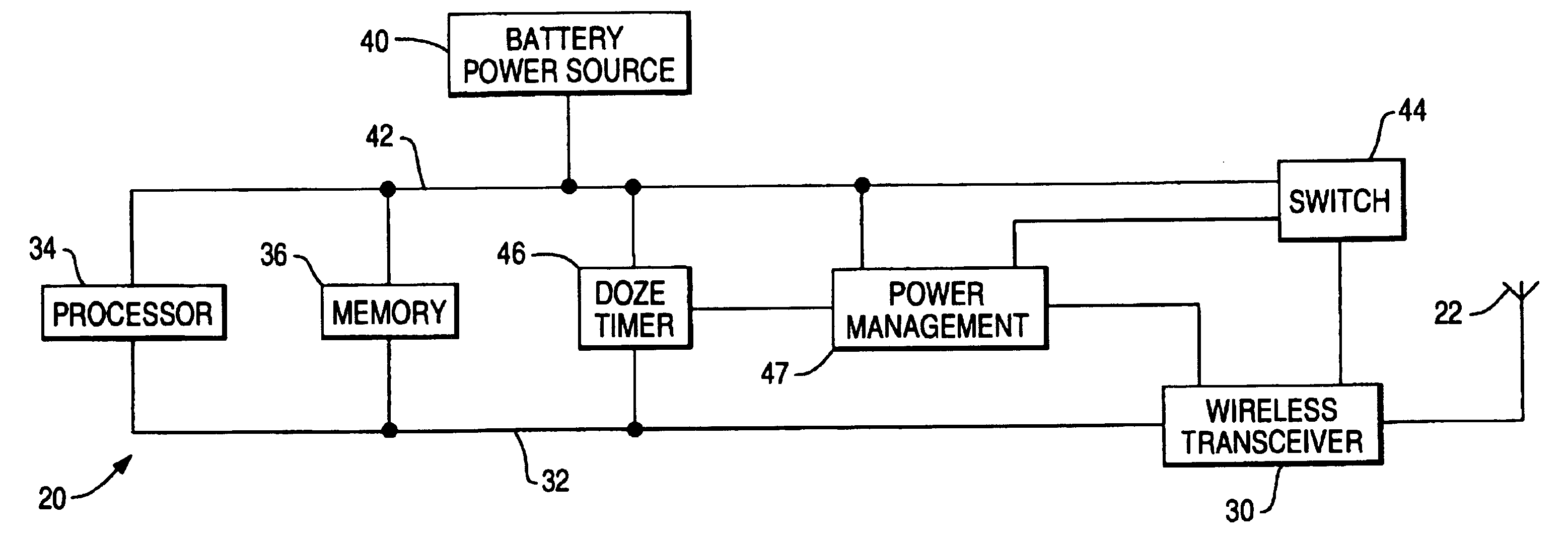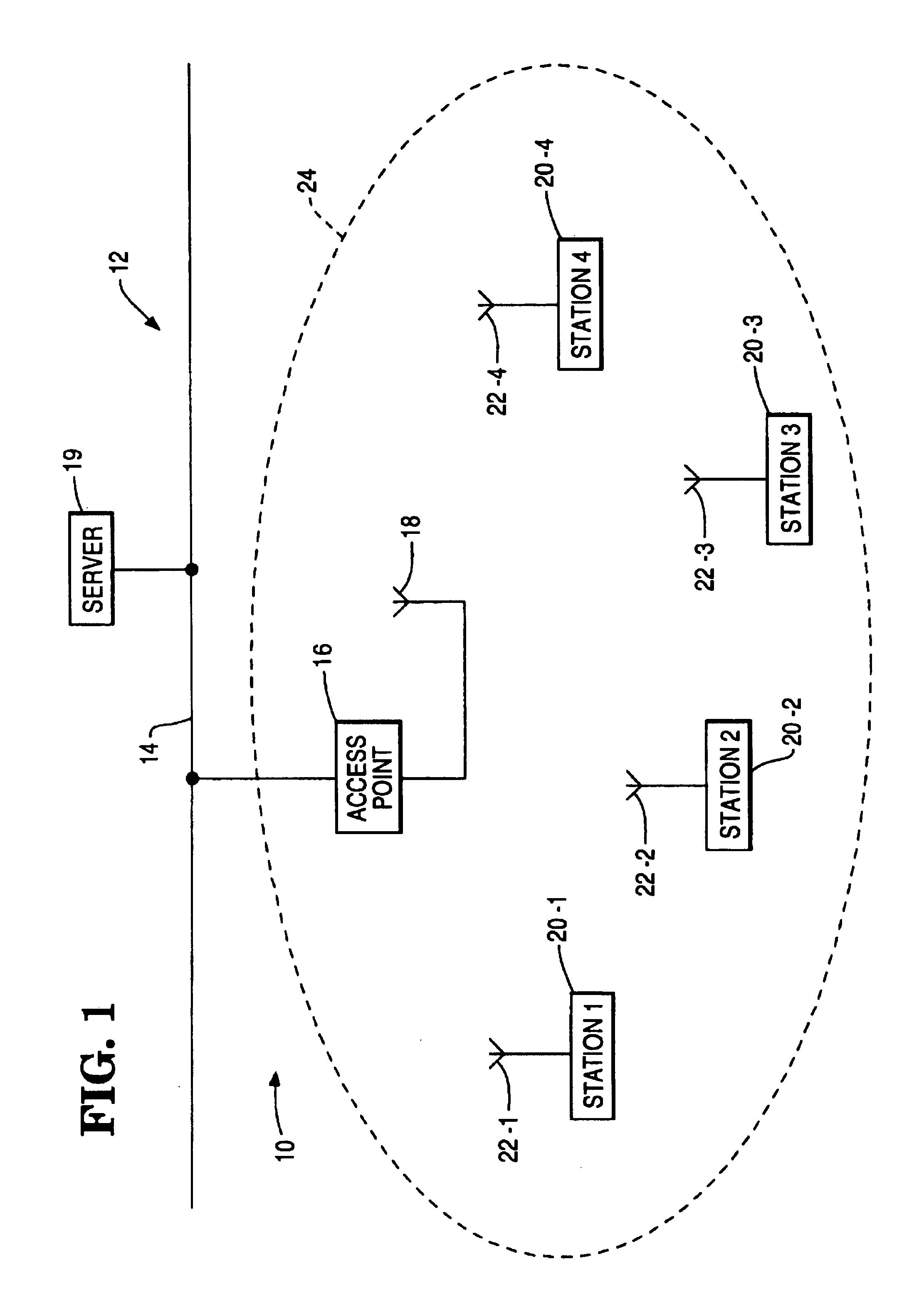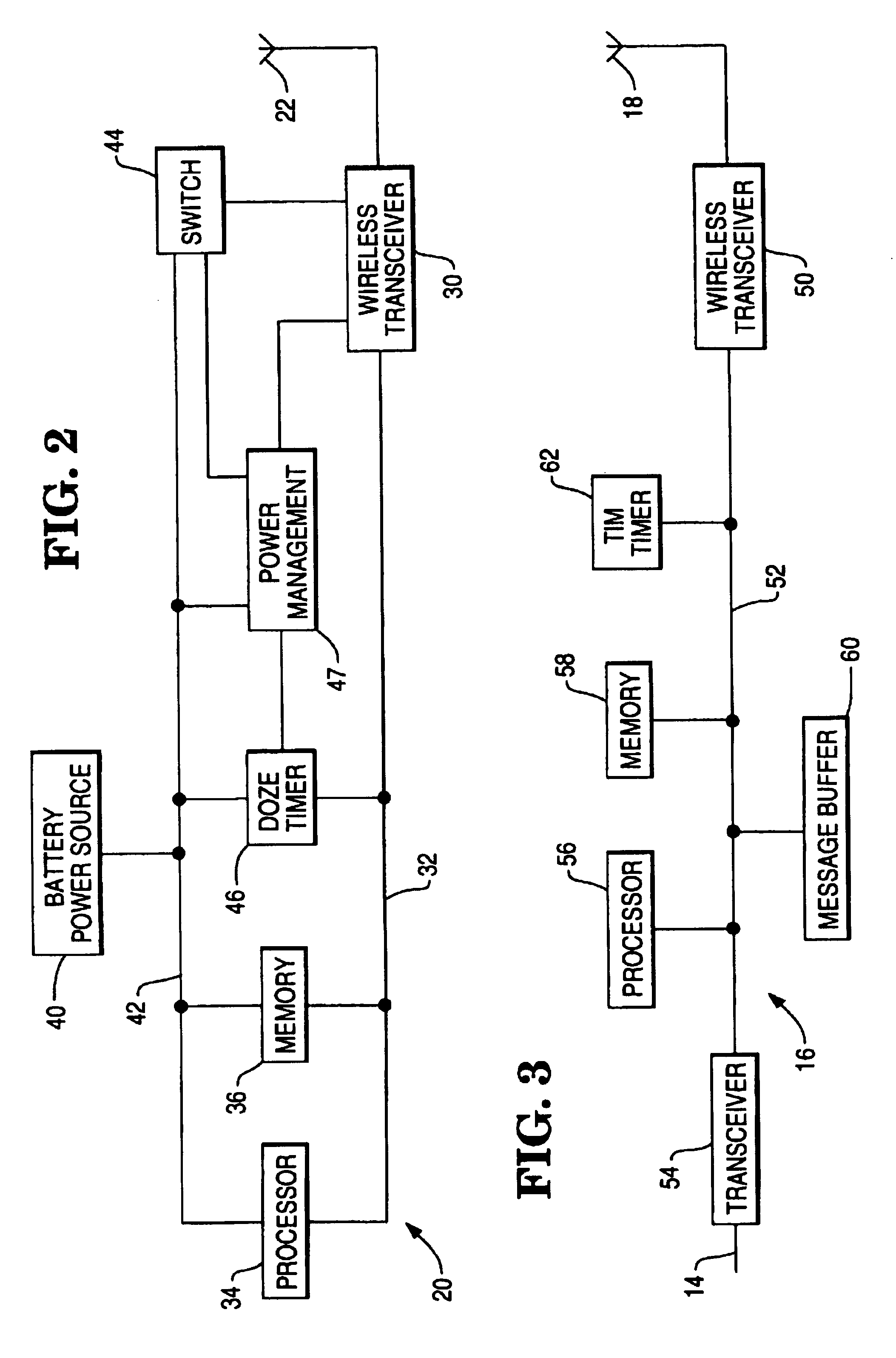Wireless data communication system having power saving function
a technology of data communication system and function, applied in the field of wireless data communication system, can solve the problems of inefficient use of wireless communication medium, insufficient response time for normal network operation at current data rate, etc., and achieve the effect of efficient use of wireless medium and more power efficien
- Summary
- Abstract
- Description
- Claims
- Application Information
AI Technical Summary
Benefits of technology
Problems solved by technology
Method used
Image
Examples
second embodiment
[0035]Although, in the above description, it has been assumed that the stations 20 are operating in power-save mode throughout, it will be appreciated that it is possible that a station 20 can dynamically select to be in power-save mode or continuous-active mode, the access point 16 being informed of all mode changes. When a station 20 is operating in continuous-active mode, the message buffering system is by-passed and messages are sent to the station directly when they arrive. Where data traffic to a station is predictable to a certain extent, an automatic procedure may be employed to keep the station in continuous-active mode prior to the expected traffic, and return it to power-save mode when no further traffic is expected. Thus, for example, each time a station 20 sends a message (via the access point 16) it could be controlled to remain in continuous-active mode for a predetermined time, sufficient to allow for a response message to be received in normal circumstances. The acc...
first embodiment
[0038]In a similar manner to that described for the first embodiment, the mobile wireless station 220 can operate either in a power-save mode, or in a continuous-active mode. In the power-save mode, the station 220 can be in an awake state, in which it is fully operational, or in a doze state, in which the wireless transceiver 230 operates at a reduced power level.
[0039]The network 210 operates in accordance with a power saving scheme, the principles underlying which will now be described. At initial start-up, one of the stations 220, assumed here to be the station 220-1, will assume the role of master station, and commences to transmit PSYNC messages (to be described) at regular intervals. The PSYNC messages are broadcast messages and therefore received by all stations. Preferably, each station 220 initially listens for a PSYNC message for a predetermined time, and if none is received, assumes the role of master station. The PSYNC messages include a portion identifying the message ...
PUM
 Login to View More
Login to View More Abstract
Description
Claims
Application Information
 Login to View More
Login to View More - R&D
- Intellectual Property
- Life Sciences
- Materials
- Tech Scout
- Unparalleled Data Quality
- Higher Quality Content
- 60% Fewer Hallucinations
Browse by: Latest US Patents, China's latest patents, Technical Efficacy Thesaurus, Application Domain, Technology Topic, Popular Technical Reports.
© 2025 PatSnap. All rights reserved.Legal|Privacy policy|Modern Slavery Act Transparency Statement|Sitemap|About US| Contact US: help@patsnap.com



